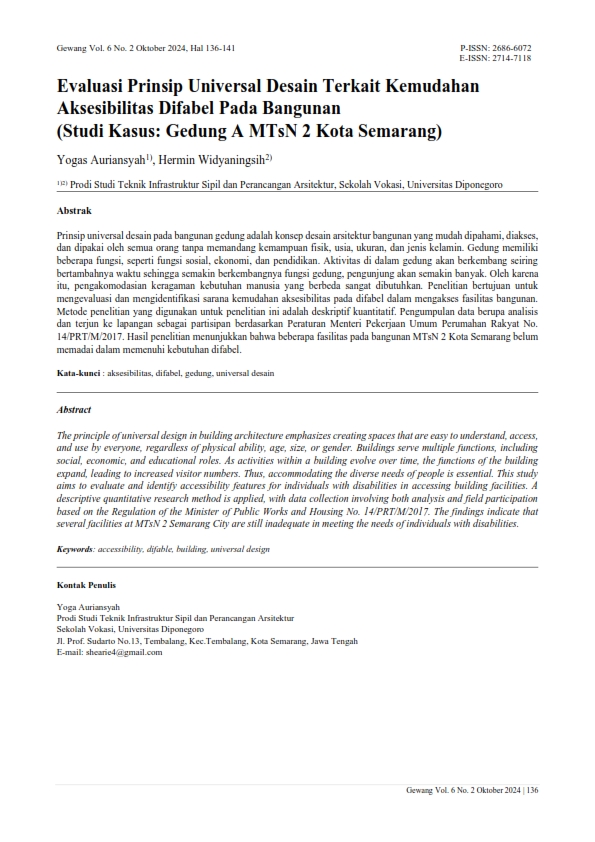Evaluasi Prinsip Universal Desain Terkait Kemudahan Aksesibilitas Difabel Pada Bangunan (Studi Kasus: Gedung A MTsN 2 Kota Semarang)
Main Article Content
Abstract
The application of biophilic architecture has become an important focus in the design of built environments that aim to enhance human well-being through a deeper connection with nature. This study examines the concept of biophilic architecture as a basis for planning and developing coral reef conservation facilities. This approach combines natural elements such as vegetation, air, and natural lighting to create a space that is not only functional but also supports the balance of the marine ecosystem. Through the lens of literature and case analysis, this research identifies key principles of relevant biophilic architecture, such as visual access to nature, natural ventilation, and the use of organic materials, that can be applied to the design of conservation facilities. The results show that the application of biophilic architecture not only has an impact on environmental sustainability but also increases the effectiveness of coral reef conservation programs by creating an environment that supports human interaction with marine ecosystems. This study concludes that the integration of biophilic architecture in the design of coral reef conservation facilities is an innovative approach and has the potential to provide long-term benefits for marine ecosystems and human well-being.
Downloads
Article Details
This license enables reusers to distribute, remix, adapt, and build upon the material in any medium or format, so long as attribution is given to the creator. The license allows for commercial use

